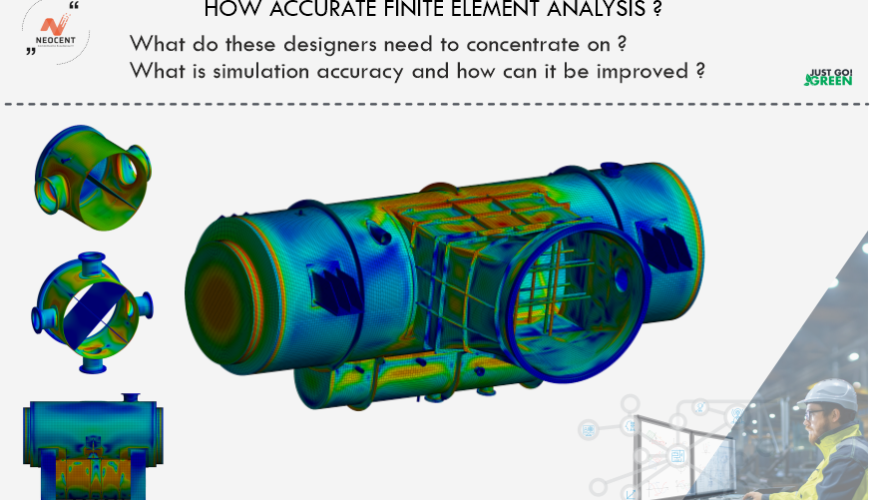FEA is almost like a calculator: it’s as accurate as of its user. But it’s also quite complex, and there are certain inaccuracies involved, that you can’t influence. Those aren’t that tragic, however, provided that you know what you are doing!
What is critical for accuracy in Finite Element Analysis?
This is a common question that haunts most designers: what is accuracy in FEA or CFD simulation? And just how accurate are these computer models? With rapidly advancing technology and growing computer power, simulations have started to play a major role in product design and the optimization process.
Thus, the customer can ensure that the simulations are accurate and within permissible limits by providing the designers with:
- Exact application of the designed component
- Typical loading conditions
- Actual material/material properties/experimental data for the material to be used
Simulation Accuracy for the Designer On one end, small-scale companies generally prefer to outsource simulations of components to medium-scale companies. On the other end of the spectrum are the multinationals. These companies have dedicated in-house design departments that specifically use simulations like FEA and CFD. Alternatively, they outsource the work to the medium-scale companies. So the designer here refers to the latter.
What do these designers need to concentrate on? What is simulation accuracy and how can it be improved? The factors from the perspective of the designer include:
- Appropriate mesh accuracy
- Mesh independence
- Element technology
- Validation
- Appropriate mesh accuracy
CAD geometries are stored as B-splines, etc. These are curves that are used to represent the exact geometry. Later in the simulation process, these CAD geometries are discretized using FEM meshes. A whole new field called isogeometric analysis has developed in the last decade, where FEM or CFD simulation is done using the actual CAD geometry and eliminating the entire meshing process. However, this is still nascent and is something to look forward to in decades to come.
Mesh independence
One of the prominent questions to ask is if whether the mesh fits well with the geometry. In general, second-order meshes can replicate curved geometries, thus they are more suitable for accurate meshing than linear elements. In addition, the distortion of elements can also reduce the mesh quality substantially, which also affects the accuracy of the obtained solutions.
Element technology
Later in the process, the type of element used will again influence the result. The developer can help the designer to find suitable solutions in relation to this particular aspect. For example, most linear elements demonstrate volumetric locking effects when used in problems involving compressibility (like rubber materials, plasticity, etc.). Similarly, using solid elements in thin structures can lead to shear locking. Solutions to these problems are available through the use of different types of elements, and it is necessary for the designer to understand the right usage for their problem to improve simulation accuracy.
Validation
Finally, validation is the part that most designers forget. Some important questions to ask here include: Is there any data for the application being designed? How well does it compare with the experiments? In that case, what parameters in the model need to be tuned to make it more realistic? Validation plays an important part in ensuring that all the numbers used are realistic, thus ensuring a simulation result as near to reality as possible.











